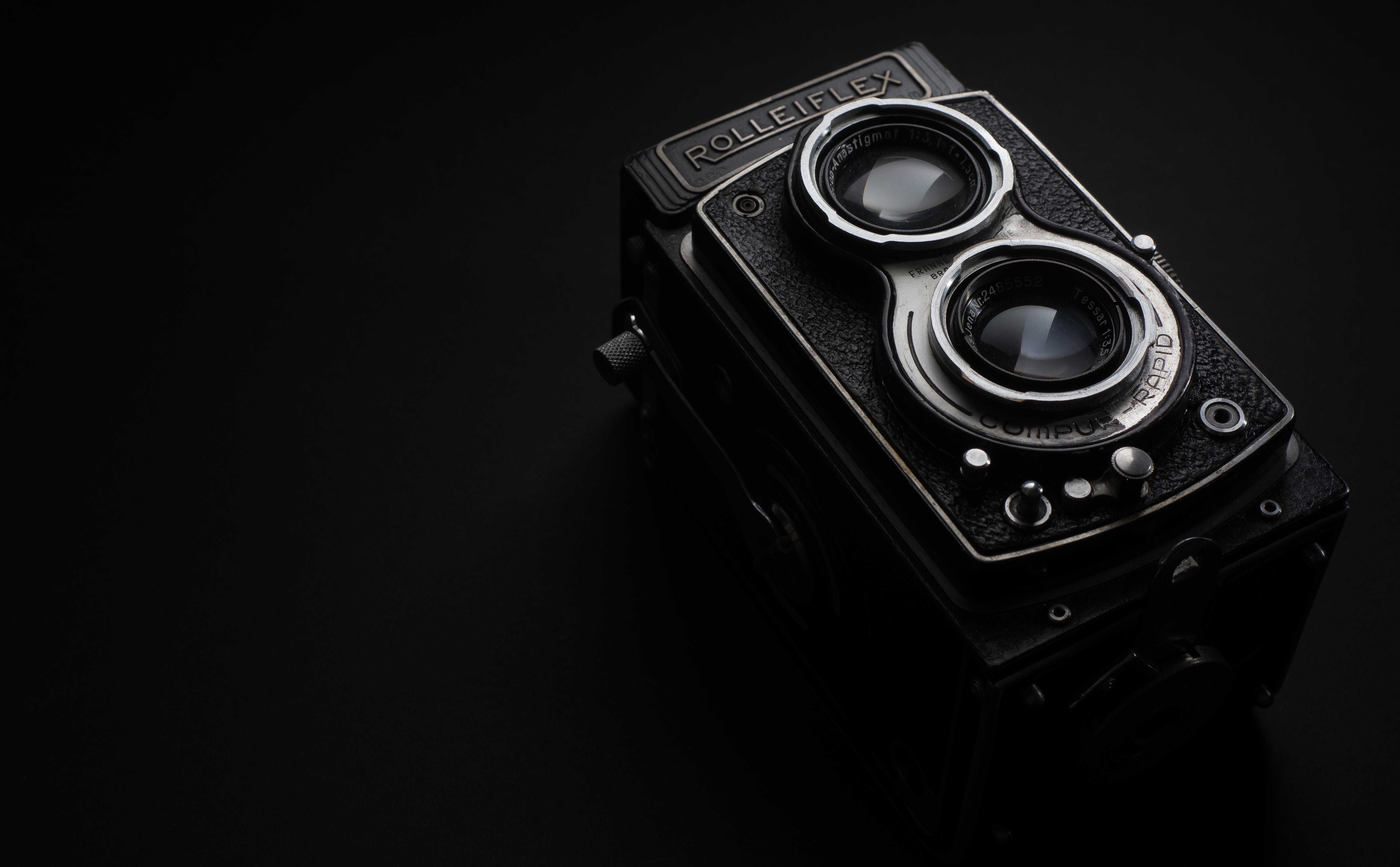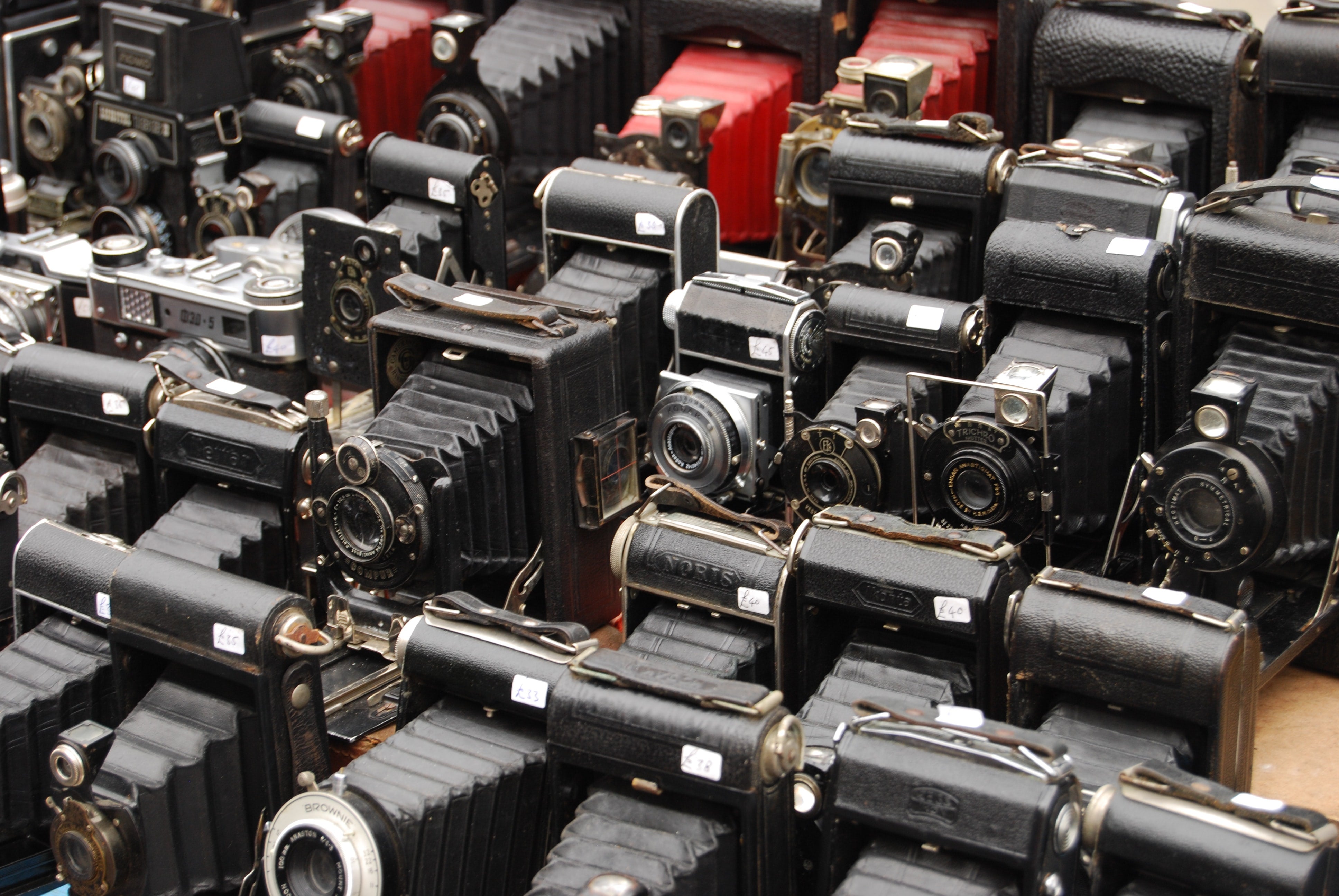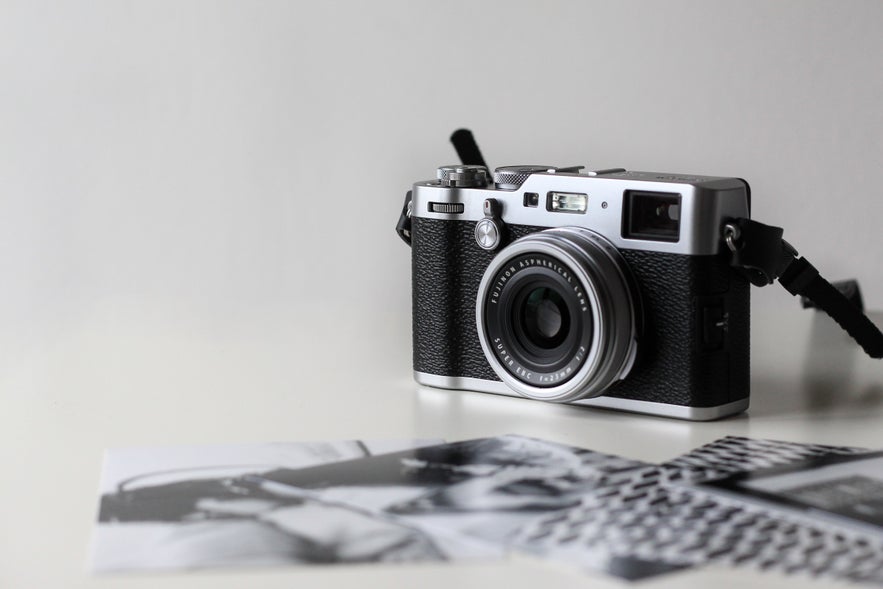
If you've been looking at booking a photography trip to Iceland, then no doubt that you will want to focus what camera gear to bring. If you want to take home print and contest-worthy photographs, then follow this guide. We suggest that you pack your camera gear into a backpack suitable for carrying onto a plane, as it will reduce the risk of gear breaking in-flight. So without further ado, let's look at our camera gear recommendations for photography in Iceland!
- Check out these Camera and Gear Reviews
- See The Best Camera Gear Recommendations for Photography in Iceland
A High Megapixel Digital SLR or Full Frame Mirrorless Camera
We recommend bringing along a digital camera, preferably a Digital SLR or a Mirrorless camera with a full-frame sensor, as these cameras have better low-light capabilities. However, a crop-sensor D-SLR will also suffice. Cameras that are suitable for the job include the Canon 5D Mark IV, Nikon D850, and the Sony A7R series.
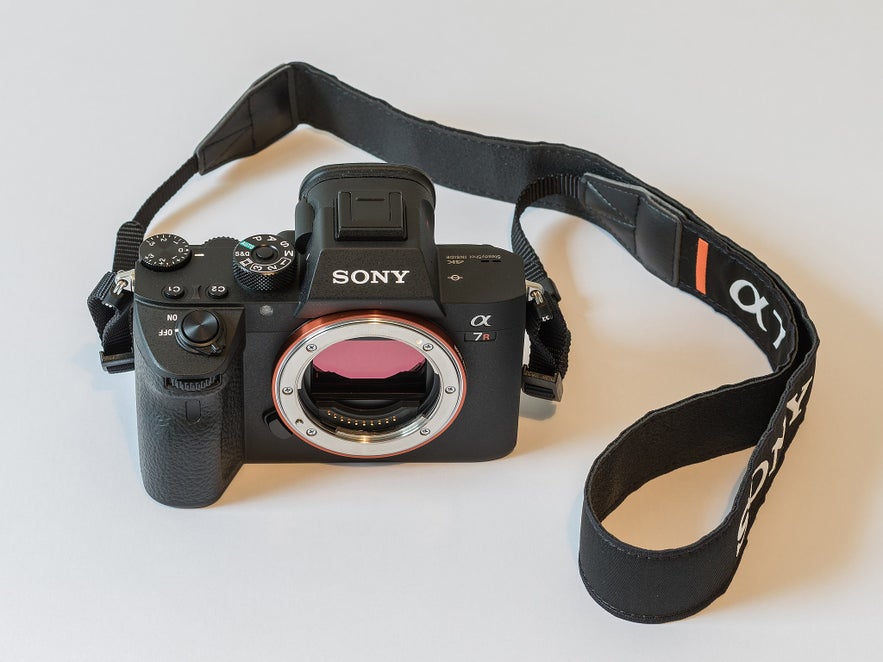 Sony A7RIII. Photo by: '© A.Savin, Wikimedia Commons'
Sony A7RIII. Photo by: '© A.Savin, Wikimedia Commons'
There are numerous other brand systems in the market today that we have not mentioned, such as Fuji, Olympus and Pentax. If your system is not in our list, then as long as it fits the basic requirements, it will still likely allow you to take photographs and to learn photography just as well as you would by using the brands above.
Lenses
A crucial part of joining any photography tour is choosing the right lenses to bring on the trip. It isn’t logical to bring along every lens that you have in your collection, particularly if you have a limited carry-on allowance on the plane.
For a photography tour in Iceland, you should bring 3-4 lenses at most, which will allow you to capture photographs across a range of different focal lengths.
Telephoto Lens
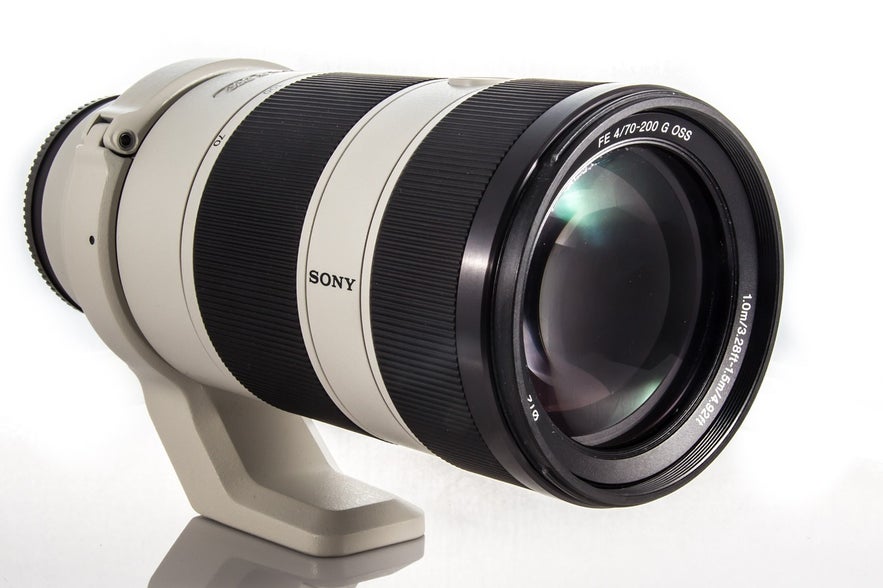 Sony FE 70-200mm f/2.8 G Master OSS. Photo by: 'Pixabay'.
Sony FE 70-200mm f/2.8 G Master OSS. Photo by: 'Pixabay'.
During your Iceland photography tour, it is likely that you will be visiting glaciers and mountain ranges. These are the perfect times to use a telephoto lens, which will allow you to zoom in on things far away and to capture abstract details. Some telephoto lenses that we recommend are the Sony FE 70-200mm f/2.8 G Master OSS, Canon 70-200mm f/2.8L IS Mark II, Canon 70-200mm f/4.0L IS, Nikkor 70-200 f/2.8G ED VR II, and the Nikkor 70-200 f/4.0G ED VR.
Where possible, choose a lens that is not too heavy to carry, as we will likely be undertaking some short hikes on our tours. The last thing you’ll want is to be weighed down by your gear.
Standard Zoom Lens
A standard zoom lens is also handy for general purpose photography during your trip. You will use this kind of lens for shooting Icelandic horses or waterfalls from a safe distance. Some standard zoom lenses that we recommend are the Sony FE 24-105mm f/4 G OSS, Canon 24-70mm f/2.8L Mark II, Canon 24-105mm f/4.0L IS USM, Nikkor 24-70mm f/2.8G ED, and the Nikkor AF-S 24-120mm f/4G ED VR. If you are using a different brand, then consider choosing one that covers an average distance from around 24-70mm. This is a versatile zoom range and will allow you to capture a variety of scenes in Iceland.
Ultra Wide Angle Lens
We recommend that you bring an ultra wide angle lens, which will help you to capture the entire beauty of Iceland’s iconic locations. These types of lenses are the primary choice of most landscape photographers and are also useful for capturing the Aurora Borealis at night.
Our photo guides have tested and recommend using the Sony FE 16-35mm f/2.8 G Master, Canon EF 16-35mm f/2.8L Mark II, Sigma 20mm f/1.4 ART DG HSM Lens, Nikkor 17-35mm f/2.8D ED-IF, and the Nikkor 14-24 f/2.8G ED. If you have a different brand, then make sure that you choose a lens with a high aperture, such as F/2.8, which will allow more light into your camera when it is dark. This will be useful for when we shoot the night sky.
A sturdy and dependable tripod and head
The tripod is the lifeline of your camera and is a definite must for non-shaky photos in Iceland’s windy conditions. It is important that your tripod is sturdy and can deal with the rugged and outdoor environment. A flimsy, cheap tripod will simply prevent you from being able to shoot most of the time and the last thing you’ll want is your expensive camera crashing to the ground.
When choosing a tripod, look for something that is lightweight and suitable for travel. Carbon fibre tripods are lighter and more rigid than their aluminium counterparts, absorb vibrations more effectively, and are more comfortable to carry for longer distances.
You will also want to consider whether your tripod has twist lock legs or a clip type. Both types have their pros and cons. Clip types are easier to set up but are easily penetrated by sand and dust. On the other hand, twist locks are easier to clean and are mostly dust and dirt proof, though can still get sand caught in the threads if you adjust the legs whilst actively shooting in-field.
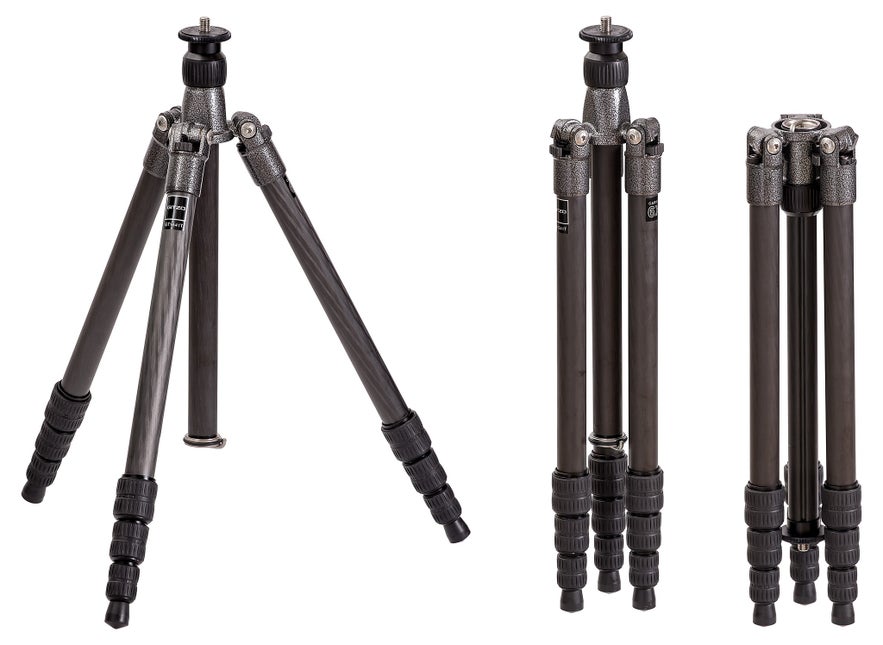 Gitzo carbon fibre tripods. Photo by: 'Lucasbosch'. Wikimedia Creative Commons.
Gitzo carbon fibre tripods. Photo by: 'Lucasbosch'. Wikimedia Creative Commons.
Gitzo and Manfrotto are tripod brands that we have tested and which we have been using for years. These brands are also available in most stores. When choosing a tripod, make sure that you have the right model for your camera system, based on its height and weight. We suggest heading into a store to try your tripod before you buy it, so you can ensure that it is the right fit for you.
As a rule of thumb, the height of your tripod must not exceed eye level with the camera placed. This will not only ensure proper posture, but will also mean that it can be handled and manoeuvred easily. So keep this in mind when choosing a ball head to fit on top of your tripod.
As we will be working on uneven surfaces, it is important that your ball head be flexible and can be adjusted accordingly. Make sure that you choose the type that you are most comfortable operating. When selecting a ball head, consider one with an Arca-Swiss quick-release plate for added security, a secure ball lock so that even a heavy telephoto lens will stay in place, and which has sufficient load capacity for your camera and lens.
We recommend the Arca-Swiss Monoball Z1 SP with Quick Release, the Benro B3 Double Action Ball Head, Sirui K-20X Ball Head, and the Vanguard SBH 100 Ball Head. If you choose to use a different brand, then make sure that it suits your shooting style, as this can affect the time that you spend setting up a shot in-field.
Filters
Filters are a mainstay of landscape photography and offer more creative possibilities with your Digital SLR than any other camera accessories on the market. They are used not only by our photo guides, but by some of the most notable landscape photographers in the world.
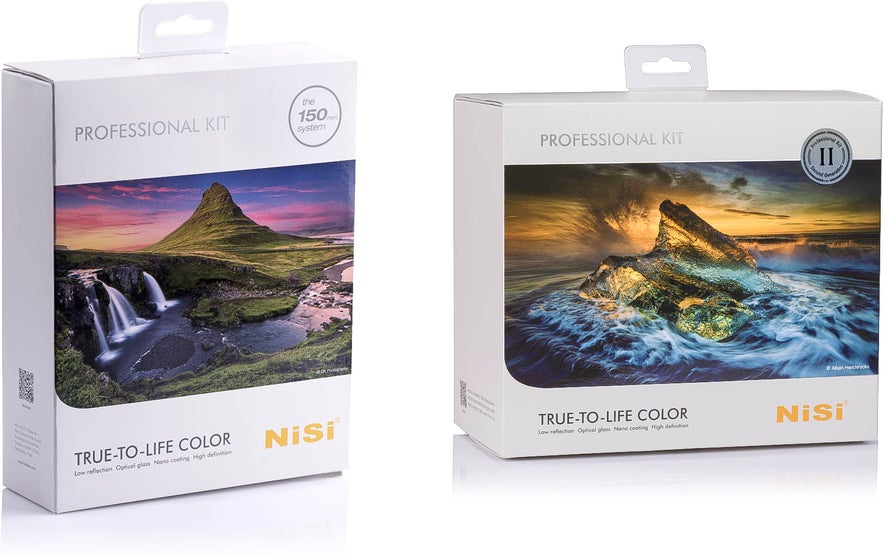 Professional landscape photography filters. Photo by: NiSi Filters.
Professional landscape photography filters. Photo by: NiSi Filters.
This is because they allow for different moods to be captured across an array of weather conditions and scenes. Although some filter effects may be recreated in post-production software, there are other things which simply cannot be reproduced during post-processing and which must be done at the time of shooting.
To make sure that you bring along the appropriate filters that will suit you best, it is necessary to understand the different types of commercially-available filters.
- See also: How to Take Great Photos in Bad Weather
Different Types of Filters for Landscape Photography
The following are types of filters that we recommend for landscape photography, which will allow you to make the best of any conditions when you are shooting in Iceland.
-
Circular Polarising Filter (CPL): These are used to boost saturation and also to enhance reflections or remove glare and flares.
-
6-stop and 10-stop Neutral Density Filters (ND): These are used for long-exposure effects. They provide the misty, still water effect and streaky, drawn-out clouds.
-
3-stop Graduated Neutral Density Filter (GND): These filters increase the dynamic range of any scene and make it possible to have bright foregrounds with well-exposed skies. They have a gradient ranging from dark at the top to clear in the middle, with a hard edge (abrupt graduation with a clear boundary between the transparent and the ND area) or soft edge (soft transition, where the graduation between light and dark areas is not so clear).
For the purpose of shooting in Iceland, it is recommended that you bring along a soft edge GND rather than a hard edge, as there will be very mountainous areas where horizons are not well-defined.
For your photography trip, we strongly recommend that you purchase one of each of these filters well in advance, as they may not be available in Iceland when you arrive. Our filter system of choice is NiSi, as the filters are durable, well-made and modestly priced.
To get started, you will need to purchase a NiSi 100mm Filter Holder Kit, which is made from black powder coated Aviation-grade billet aluminium. This filter holder will allow you to insert 3 filters at a time in addition to having a CPL fitted. The kit comes with 4 adapter rings, a filter holder and a CPL, which are designed in such a way that they won’t cause vignetting on ultra-wide lenses.
Filter Systems
Filter systems come in two types - screw on and slot-in. Screw type filters attach via the filter thread on the front of most lenses and offer the advantage of using premium quality optical glass, while their small size means they’re easy to store and carry.
 Nisi circular filter kit. Photo by: Nisi Filters.
Nisi circular filter kit. Photo by: Nisi Filters.
The disadvantage is that each filter will only fit one diameter of lens, so if your lenses require different filter thread sizes, then you will need the same filter in different sizes. Also, stacking more than one screw type filter on top of another increases the risk of vignetting.
On the other hand, slot-in filters require you to purchase an adapter ring and holder, to which filters may be inserted. They are generally more expensive compared to the screw-in solution, but they introduce a few advantages that are important to landscape photographers.
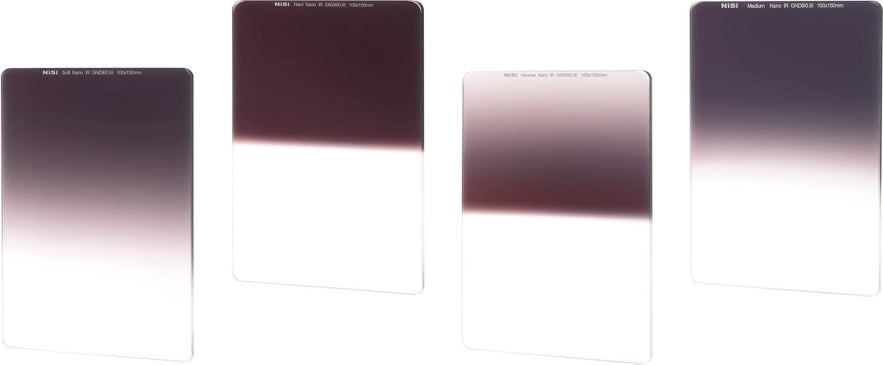 Nisi Graduated Density Slot-In Filters. Photo by: Nisi Filters.
Nisi Graduated Density Slot-In Filters. Photo by: Nisi Filters.
With a slot-in filter system, you can replace filters in the field rapidly. You can also install many filters without having issues with vignetting, as there are special holders available even for ultra-wide lenses.
If you plan to use a number of filters or have several lenses, a slot-in system is more practical. You only need to buy one of each type, which can be inserted into a holder attached to the lens with an appropriately sized holder ring. You will need a ring to suit the filter thread of each of your lenses but you can swap the holder between them. This will actually save you money in the long run.
Cable Release or Intervalometer remote
When you use filters and tripods, it is a good idea to use a cable release or intervalometer remote. These will allow you to release the shutter of your camera whilst minimising shake, resulting in clearer and sharper photos.
A remote will also allow you to create photos with shutter exposures of more than 30 seconds, which is the usual maximum exposure time allowed by your camera unless you take complete manual control by utilising Bulb mode.
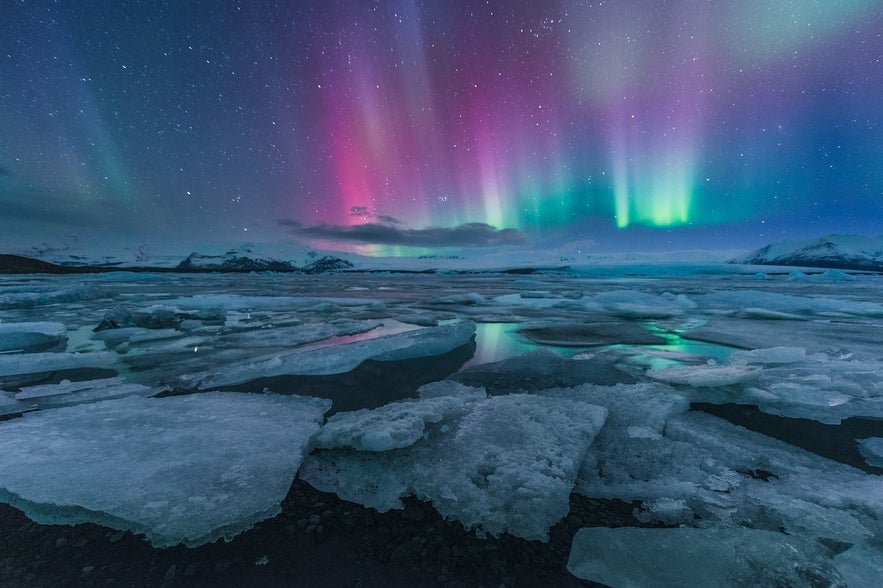 A cable release is useful when photographing the Northern Lights. Photo by: 'Iurie Belegurschi'.
A cable release is useful when photographing the Northern Lights. Photo by: 'Iurie Belegurschi'.
By using a remote for longer exposures in Bulb mode, you will be well-equipped for astrophotography and shooting star trails. Whichever cable release or intervalometer you choose, make sure you double check that it is suitable for your camera.
When choosing a cable release or intervalometer remote, make sure that it will be compatible with your camera.
Rain Sleeves
Shooting in Iceland means that you will be outdoors most of the time and that your gear will be exposed to the elements. To protect your camera, we suggest investing in some rain sleeves, which offer protection from mist, water spray and dust.
These are particularly useful when shooting at the coast, near waterfalls or when it is raining. The Altura Photo Professional Rain Cover delivers maximum protection for your camera and lens with a durable, lightweight, waterproof material.
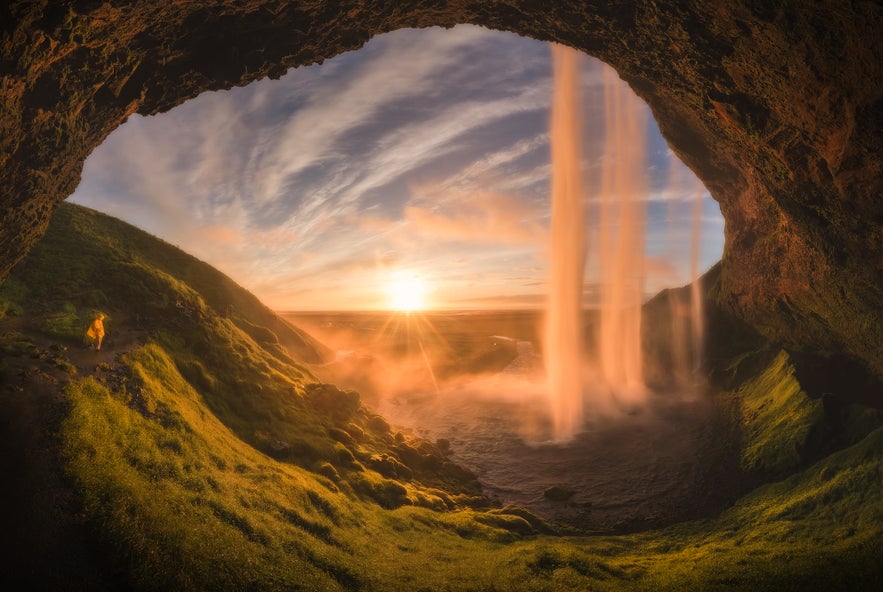 A rain sleeve is handy for shooting on rainy days or behind Seljalandsfoss waterfall! Photo by: 'Kaspars Dzenis'.
A rain sleeve is handy for shooting on rainy days or behind Seljalandsfoss waterfall! Photo by: 'Kaspars Dzenis'.
The sleeve is easy to install and remove, offering fast access to both your camera and lens. It is also compatible with most camera and lens configurations.
Altura Photo Professional Rain Cover for Large Canon Nikon DSLR Cameras
The Professional Rain Cover Protector from Altura Photo® delivers maximum protection for your camera and lens with a durable, lightweight, waterproof, nylon material. The Altura Photo® rain cover offers protection from serious damage that can be caused by rain, snow, salt spray, dust, dirt and sand.
Cleaning Kit
When you are out shooting in-field, particularly in Iceland, it is likely that you will end up with smudges, drops of water, and other dirt on your lens. To keep your images spotless, you will find yourself regularly needing to clean the front element of your lens.
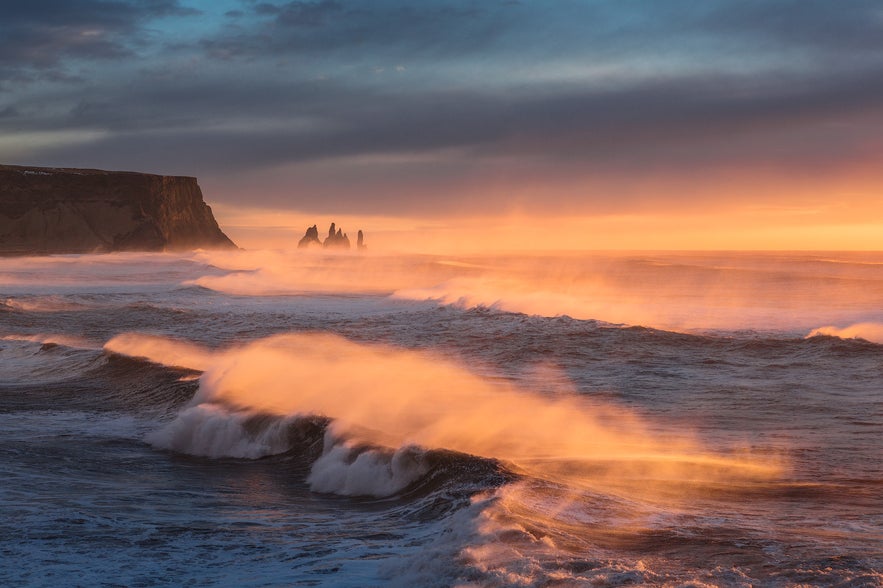 It's important to keep your camera clean to ensure spotless shots! Photo by: 'Iurie Belegurschi'.
It's important to keep your camera clean to ensure spotless shots! Photo by: 'Iurie Belegurschi'.
We recommend getting yourself a Giottos Rocket Air Blaster, a Vortex Lens Cleaning Pen, a MagicFiber Microfiber Cleaning Cloth, as well as some ZEISS Lens Wipes. Putting together a cleaning kit like this help you to battle the elements, ensuring clean, dust-free images when you are out in-field.
Zeiss Lens Cleaning Wipes
Individual travel size packet. Pre-moistened non-abrasive lens cloth safely and quickly cleans any lens. High-tech ammonia-free formula cleans effectively without leaving streaks or residue.
MagicFiber Microfiber Cleaning Cloths, 6 PACK
Not all microfiber cloths are MagicFibers. MagicFiber Microfiber Cleaning Cloths are made from the finest microfiber material using state-of-the-art manufacturing, with a specially fused saw tooth edge to prevent fraying.
Vortex Optics Lens Cleaning Pen
Now you can get rid of smudges, dust, and oily fingerprints that blur the best of views. This Lens Pen from Vortex gives you everything you need in a small, lightweight package that`s no larger than a pocket pen. The Vortex Lens Pen uses a revolutionary non-liquid compound that outperforms other cleaners and won`t spill or dry out.
Giottos AA1920 Rocket Air Blaster Small-Black
Small black Rocket Air Blaster easily removes dust and debris from cameras, lenses and filters with a powerful blast of air. Made of rubber. Includes a one-way valve to prevent Blaster from breathing in dust and spreading it back to your equipment.
Take the hassle out of organising a photography trip to Iceland. Join one of our photo tours and workshops, which will get you to all of the right places at the right times to capture truly amazing shots.


